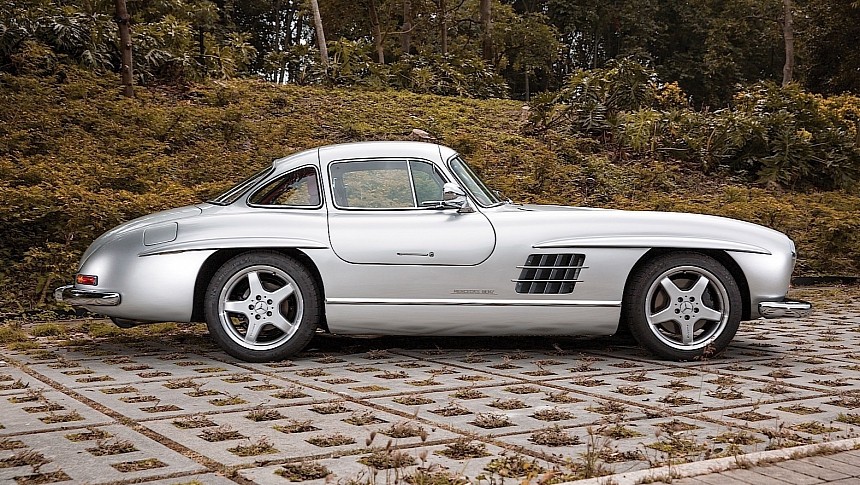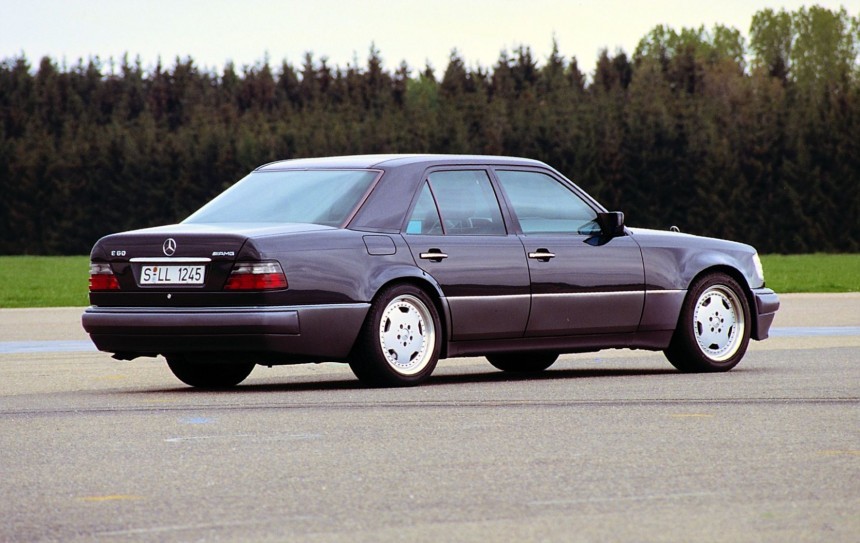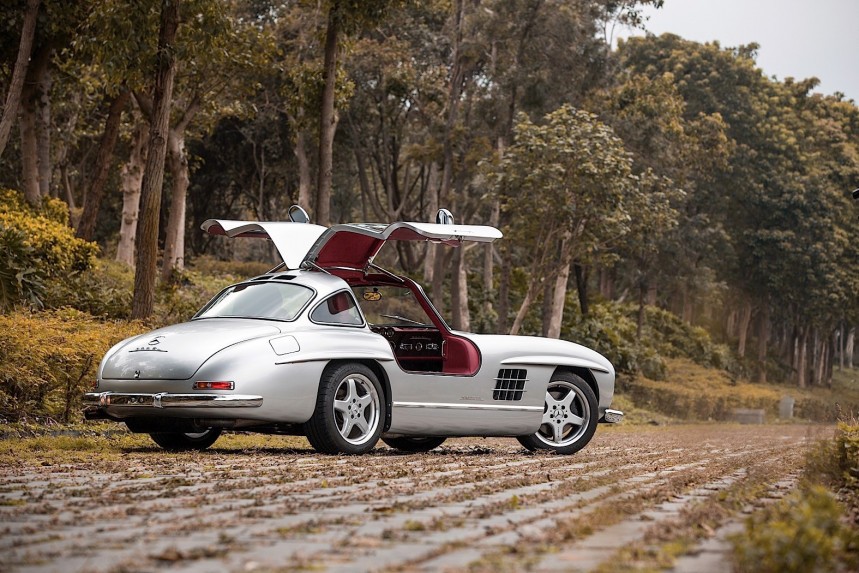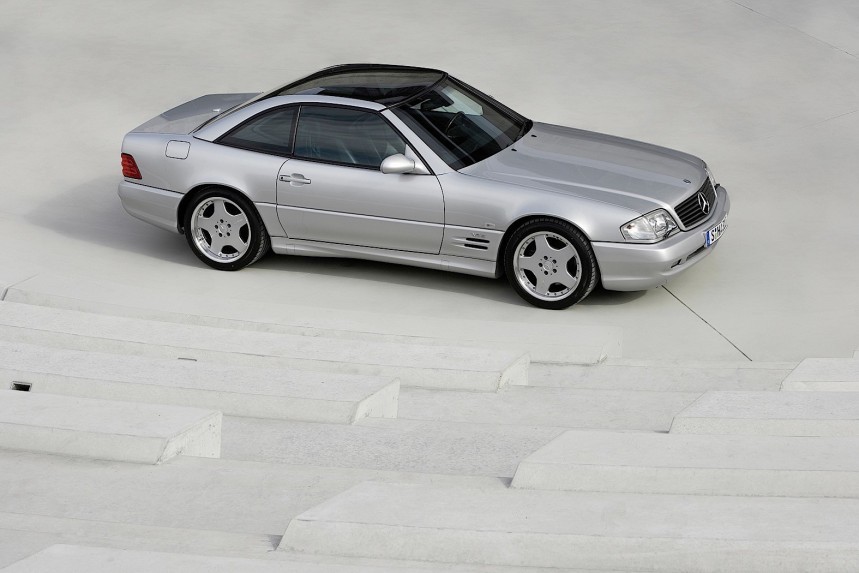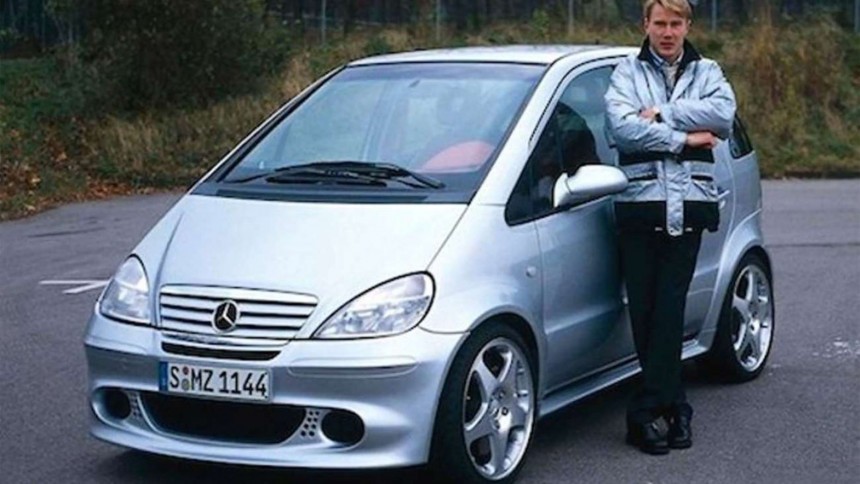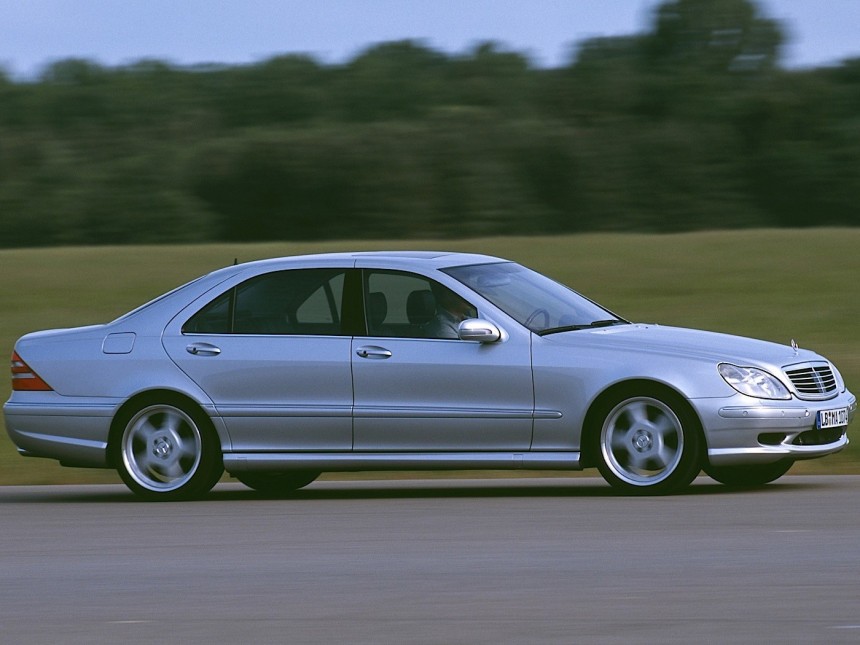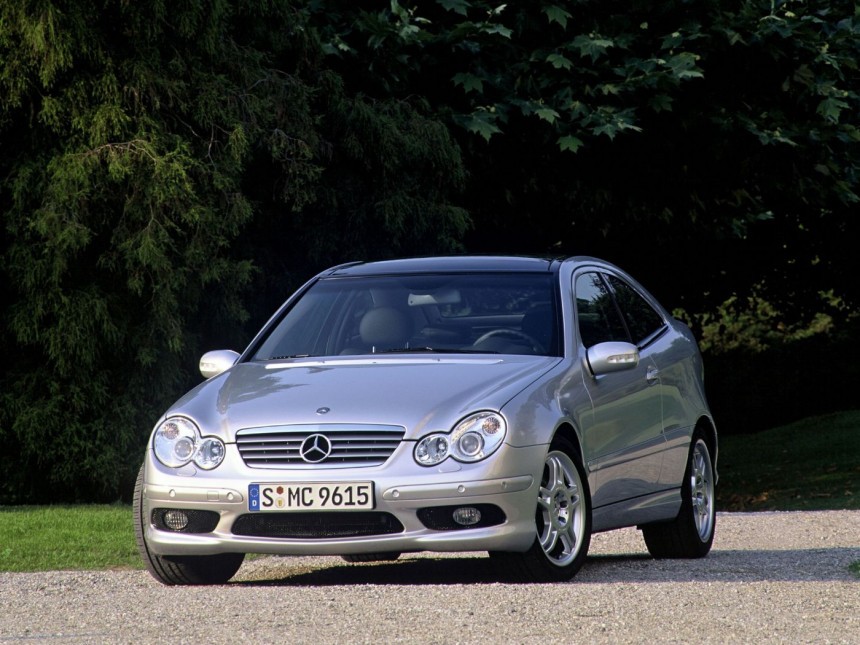Over half a century ago, AMG was started as an autonomous engineering firm exclusively dedicated to enhancing the performance of Mercedes-Benz vehicles.
The tale unfolds in the 1960s when two engineers, Hans Werner Aufrecht and Erhard Melcher, were deeply engrossed in refining the 300 SE racing engine within Daimler-Benz's Development Department. This engine promised to propel their motorsports endeavors until an unfortunate twist disrupted the course - Daimler swiftly discontinued all racing activities.
Because the two engineers lived and breathed motorsports and were already in cahoots with how Mercedes-Benz engines could be modified for racing, they decided to continue their work on their own, establishing a new company.
Fast forward to 1999, and DaimlerChrysler AG acquired a significant stake, eventually becoming the sole owner of AMG in 2005. Mercedes-AMG GmbH is a fully-owned subsidiary of Mercedes-Benz AG nowadays and is part of the Mercedes-Benz Group.
Established in 1967 within the confines of an old mill in the quaint German town of Burgstall, the initial association between AMG and Mercedes-Benz was anything like the one they have today. Over 56 years ago, the only connection between the two companies orbited around the fact that two former Daimler engineers were making luxurious Mercedes-Benz models go much faster.
It took several years for the partnership between the two entities to mature into what it is nowadays when they are part of the same family. This concerns motorsport ventures, modified road cars, and even vehicles not based on Mercedes-Benz models, such as the Mercedes-AMG GT or the 2023 SL (R232) roadster.
The term "motorsport endeavors" is pivotal here, given that a significant portion of AMG's expertise in metamorphosing ordinary Mercedes-Benz models into tire-squealing beasts stemmed from its racing heritage. In the beginning, AMG supported its motorsport ventures similar to how Ferrari started - by selling fast road cars inspired by racing.
Starting as a modest workshop that either modified and sold Mercedes-Benz road cars or built them for the track, AMG gradually transitioned into a prominent aftermarket tuning company. Today, it stands as a remarkably profitable division within the Mercedes-Benz Group. Over its more than half-a-century journey, AMG has been instrumental in crafting some of the most coveted and high-performance Mercedes-Benz models to grace both the streets and the track.
Given the vast array of impressive AMG-tuned or -developed Mercedes models, particularly with the recent expansion of its lineup, I've set my focus on unearthing some of the lesser-known four-wheeled beasts that proudly emerged from both Burgstall and, more recently, Affalterbach -the headquarters that gave life to those three significant letters: A, M, and G.
Placing larger and more powerful engines in somewhat smaller cars wasn't confined to the iconic "Red Pig" – it was a hallmark of AMG's philosophy until a few years back. This vehicle modification approach draws inspiration from America's original muscle cars, reflecting a distinctive trait of AMG's design ethos.
A similar concept was employed with the W124 generation of the E-Class, where AMG integrated a modified version of a V8 typically reserved for the most sizable or sporty Mercedes-Benz models of that era, like the S-Class and SL roadster. Fondly dubbed the "Hammer" by American media upon its arrival on the market, the Mercedes-Benz 300 E 5.6 AMG was the fastest four-door sedan on the planet during its time.
Few people remember it, but the muscle 1980s sedan had an even mightier successor based on the same W124 generation. The E 60 AMG is often hailed as the second iteration of the "Hammer."
Now part of the 'rarest W124 versions' list, the 'Hammer II' was the most powerful E-Class of its day, with way more oomph than the Porsche-built Mercedes-Benz E 500 upon which the AMG was built. The model was powered by a naturally aspirated 6.0-liter V8 that delivered a massive 380 HP (385 PS) and 428 lb-ft (580 Nm) of torque.
Despite the size and heft of the boxy but aerodynamic sedan, the E 60 AMG could keep up with the much lighter and smaller Porsche 911 (993) Carrera. According to some, only 148 units of the model have been built, making it rarer than most limited-edition supercars.
By introducing the so-called 'Panamericana' grille a few years back, Mercedes-AMG is currently keeping an eye on the illustrious racing history of its parent company, but this started farther away from our time than you would think.
Developed in the 1990s, the Mercedes-Benz 300 SL by HWA retains its 1954 model designation due to a simple yet significant rationale. It's essentially a restomod, fitted with modern features but based on an original Gullwing. Standing as a unique creation in the AMG lineage, it was a collaborative effort involving AMG and HWA.
Suppose you need to be better-versed in what HWA is. In that case, you should know the initials represent Hans-Werner Aufrecht, one of the two pioneering engineers who co-established AMG in 1967. In more contemporary times, HWA has emerged as a crucial partner for Mercedes-Benz and AMG in various motorsport leagues, most notably the DTM (Deutsche Tourenwagen Masters) series.
A mere 11 units of the 300 SL HWA were crafted, with the batch initially being requested by the Sultan of Brunei. Each model started its journey as an original 1954 model but underwent a significant transformation, incorporating modern interior luxuries and a revamped drivetrain, all being provided by AMG and put together by HWA.
As most are probably aware, the Sultan of Brunei was making news back then as having the largest collection of prototypes and various one-off cars in the 1990s, starting from pre-Cullinan Rolls-Royce SUVs to pre-Purosangue four-door Ferraris.
It only makes sense that a 'regular' 300 SL Gullwing would have been too common for his colorful collection, and that is when the restomod idea came to be. Among the array of modifications, the original inline-six engine of the car was swapped out for the potent 6.0-liter V8 from the E 60 AMG, mated to a four-speed automatic transmission. The transformation extended to an independent suspension setup, upgraded four-wheel disc brakes, and a completely reimagined interior, blending classic aesthetics with modern comfort and performance.
As AMG transitioned from a mere racing partner and independent tuner to an integral part of Mercedes-Benz in 1999, the newfound camaraderie was commemorated with a special version of the SL roadster (R129), this time as part of the Mercedes-Benz lineup of the time.
The distinctively named model boasted one of the largest passenger car powertrains ever seen in Mercedes-Benz history, lifting the 'small car, big engine' ethos to newer heights.
As its official name might suggest, this uber-rare Mercedes-Benz SL was propelled by a naturally aspirated V12 engine based on the 6.0-liter M120 found in the S, CL, and SL 600 models.
Sporting an immense 7.3-liter displacement, the colossal V12 residing under the hood packed quite a punch, boasting a respectable 518 HP (525 PS) and 750 Nm (553 lb-ft) of torque - all achieved without the assistance of forced induction.
Available until 2001, a mere 85 units of this powerhouse were ever crafted, making it not only one of the most potent SL models in production up to that point but one of the rarest.
Interestingly, this remarkable 7.3-liter V12 variant found its way into several Pagani Zonda models later on, including the C12 S 7.3, F, Cinque, and Tricolore. At that time, it was also the lightest twelve-cylinder engine on the planet, owing to the extensive use of aluminum in its construction.
Unknown to many, AMG also took a crack at the tiniest Mercedes model after Mercedes-Benz committed to a head-to-head battle with Volkswagen's Golf using the original A-Class, the most innovative car of the 1990s.
Equipped with an array of purpose-built four-cylinder engines that weren't notably powerful, the A-Class W168 was in dire need of additional displacement and perhaps better traction, as per AMG's evaluation of the sub-compact, FWD model.
A Skunkworks team quickly jumped on the project behind closed doors, but not in the way most would have expected. Rather than augmenting the 1.9-liter four-cylinder's displacement, as per tradition, the engineers opted to install a second, identical engine in the car.
This somewhat unusual way to create the first-ever hot hatch with a Mercedes-Benz badge was made possible by the double-floor construction of the first A-Class.
Originally just a proof-of-work concept, four identical Mercedes-Benz A 38 AMG prototypes were built. The innovative design of the first A-Class, featuring an intelligent sandwich floor, enabled AMG to install a second 1.9-liter engine and an additional 5-speed manual gearbox under the luggage compartment, resembling the layout seen in the smart fortwo.
This transformation turned the little A-Class that could from a front-wheel-drive sub-compact into an all-wheel-drive hot hatch boasting two gearboxes controlled by a single shifter, with 246 HP (250 PS) and 266 lb-ft (360 Nm) of torque.
Those were insane numbers for a car of its size at the time, which is probably why it never entered production. Perhaps it was a wise idea not to offer it to the public, especially considering that the A-Class image at the time wasn't very sporty thanks to the infamous 'moose test.'
As an addendum, the A 190 Twin-engine study wasn't the most powerful A-Class until the first A 45 entered the scene, but one W168 that got under the knife of HWA in 2000. Taking it a step further than AMG, the engineers from HWA converted an A 190 from FWD to RWD.
That's not the crazy part, but the reason for the conversion. They then removed the transverse four-cylinder and replaced it with a supercharged, 3.2-liter V6 mounted longitudinally, borrowed from the C 32 AMG. With 349 HP (354 PS) and 332 lb-ft (450 Nm) of torque sent to the rear wheels, it was the equivalent of putting a pure-bred racehorse to push a wheelbarrow.
One of the rarest AMG versions of the S-Class was so shortlived that it was only manufactured for a single month in 2001, and despite wearing the now-common S 63 moniker, only a few people remember or even know of its existence.
Mercedes-Benz had switched its focus to fuel economy instead of power toward the end of the second millennium. AMG was unfazed by this predicament when the carmaker unveiled the top-of-the-range V12 version of the S-Class W220 with less power than its forerunner.
The naturally aspirated twelve-cylinder powering the S 600 before the facelift was internally codenamed M137, and it was a step down from the M120 used on the model's predecessor in nearly every aspect apart from fuel economy.
With a weird three-valves-per-cylinder setup instead of the customary four-valve, the 5.8-liter powertrain also featured a single overhead camshaft (SOHC), producing a modest 362 HP (367 PS and 530 Nm (390 lb-ft) of torque. It had much-improved fuel economy figures compared to the V12 housed in the S-Class W140, but it was also down in power.
By the time AMG engineers finished working their magic with it, the naturally aspirated V12 was making 438 HP (444 PS) and a massive 544 lb-ft (740 Nm) of torque. All that oomph was sent exclusively to the rear wheels through a 5-speed automatic transmission modified by AMG as well.
Sold in extremely limited numbers, the naturally aspirated S 63 was only offered with a long wheelbase and rear-wheel-drive. Allegedly, only 70 cars were sold exclusively through AMG in European and Asian markets, which makes it one of the rarest production models in the company's history.
It was back in the 1980s that AMG first dabbed with modifying a vehicle powered by a diesel engine in the form of enhancing the look and handling of the MB100 van. However, it wasn't until 2002 that AMG, now an official subsidiary of Mercedes-Benz, introduced its first and, so far, only series-production diesel car.
Named the C 30 CDI AMG, the sports car using the devil's fuel was derived from the C-Class (W203) and came in three versions. AMG engineers took the legendary inline-five OM612 engine from the C 270 CDI, which it shared with models including the Sprinter van, and modified it extensively.
How extensively, you ask? They started by upgrading the displacement from 2.7 to 3.0 liters via a longer stroke. Then, they added a larger turbocharger, pairing it with a modified intercooler. While the jump in power wasn't exactly massive, with the standard C 270 CDI being uprated from 168 HP (170 PS) to 228 HP (231 PS) in C 30 CDI AMG form, the torque figures achieved the most impressive gains.
As most of you know, diesels are all about pulling power. While the standard 2.7-liter engine had a more than reasonable 279 lb-ft (370 Nm) of twist, the AMG massaged version got no less than 398 lb-ft (540 Nm) of torque.
With power channeled exclusively to the rear wheel through the then-classic 5-speed automatic transmission, the C 30 CDI AMG could go from 0 to 100 kph (62 mph) in 6.8 seconds. That may seem insignificant, but the model was quicker than the average hot hatch, especially since the C 30 could also be had as a hatch in SportCoupe form.
Exclusively available on the Old Continent, the only five-cylinder AMG and the only diesel in the company's history were sold in just a few thousand units as a sedan, a station wagon, or a three-door compact hatchback.
Because the two engineers lived and breathed motorsports and were already in cahoots with how Mercedes-Benz engines could be modified for racing, they decided to continue their work on their own, establishing a new company.
Fast forward to 1999, and DaimlerChrysler AG acquired a significant stake, eventually becoming the sole owner of AMG in 2005. Mercedes-AMG GmbH is a fully-owned subsidiary of Mercedes-Benz AG nowadays and is part of the Mercedes-Benz Group.
Established in 1967 within the confines of an old mill in the quaint German town of Burgstall, the initial association between AMG and Mercedes-Benz was anything like the one they have today. Over 56 years ago, the only connection between the two companies orbited around the fact that two former Daimler engineers were making luxurious Mercedes-Benz models go much faster.
It took several years for the partnership between the two entities to mature into what it is nowadays when they are part of the same family. This concerns motorsport ventures, modified road cars, and even vehicles not based on Mercedes-Benz models, such as the Mercedes-AMG GT or the 2023 SL (R232) roadster.
The term "motorsport endeavors" is pivotal here, given that a significant portion of AMG's expertise in metamorphosing ordinary Mercedes-Benz models into tire-squealing beasts stemmed from its racing heritage. In the beginning, AMG supported its motorsport ventures similar to how Ferrari started - by selling fast road cars inspired by racing.
Starting as a modest workshop that either modified and sold Mercedes-Benz road cars or built them for the track, AMG gradually transitioned into a prominent aftermarket tuning company. Today, it stands as a remarkably profitable division within the Mercedes-Benz Group. Over its more than half-a-century journey, AMG has been instrumental in crafting some of the most coveted and high-performance Mercedes-Benz models to grace both the streets and the track.
Given the vast array of impressive AMG-tuned or -developed Mercedes models, particularly with the recent expansion of its lineup, I've set my focus on unearthing some of the lesser-known four-wheeled beasts that proudly emerged from both Burgstall and, more recently, Affalterbach -the headquarters that gave life to those three significant letters: A, M, and G.
1993 Mercedes-Benz E 60 AMG - 1990s German Muscle
A similar concept was employed with the W124 generation of the E-Class, where AMG integrated a modified version of a V8 typically reserved for the most sizable or sporty Mercedes-Benz models of that era, like the S-Class and SL roadster. Fondly dubbed the "Hammer" by American media upon its arrival on the market, the Mercedes-Benz 300 E 5.6 AMG was the fastest four-door sedan on the planet during its time.
Few people remember it, but the muscle 1980s sedan had an even mightier successor based on the same W124 generation. The E 60 AMG is often hailed as the second iteration of the "Hammer."
Now part of the 'rarest W124 versions' list, the 'Hammer II' was the most powerful E-Class of its day, with way more oomph than the Porsche-built Mercedes-Benz E 500 upon which the AMG was built. The model was powered by a naturally aspirated 6.0-liter V8 that delivered a massive 380 HP (385 PS) and 428 lb-ft (580 Nm) of torque.
Despite the size and heft of the boxy but aerodynamic sedan, the E 60 AMG could keep up with the much lighter and smaller Porsche 911 (993) Carrera. According to some, only 148 units of the model have been built, making it rarer than most limited-edition supercars.
1954 Mercedes-Benz 300 SL AMG HWA - A Restomod For the Ages
Developed in the 1990s, the Mercedes-Benz 300 SL by HWA retains its 1954 model designation due to a simple yet significant rationale. It's essentially a restomod, fitted with modern features but based on an original Gullwing. Standing as a unique creation in the AMG lineage, it was a collaborative effort involving AMG and HWA.
Suppose you need to be better-versed in what HWA is. In that case, you should know the initials represent Hans-Werner Aufrecht, one of the two pioneering engineers who co-established AMG in 1967. In more contemporary times, HWA has emerged as a crucial partner for Mercedes-Benz and AMG in various motorsport leagues, most notably the DTM (Deutsche Tourenwagen Masters) series.
A mere 11 units of the 300 SL HWA were crafted, with the batch initially being requested by the Sultan of Brunei. Each model started its journey as an original 1954 model but underwent a significant transformation, incorporating modern interior luxuries and a revamped drivetrain, all being provided by AMG and put together by HWA.
As most are probably aware, the Sultan of Brunei was making news back then as having the largest collection of prototypes and various one-off cars in the 1990s, starting from pre-Cullinan Rolls-Royce SUVs to pre-Purosangue four-door Ferraris.
It only makes sense that a 'regular' 300 SL Gullwing would have been too common for his colorful collection, and that is when the restomod idea came to be. Among the array of modifications, the original inline-six engine of the car was swapped out for the potent 6.0-liter V8 from the E 60 AMG, mated to a four-speed automatic transmission. The transformation extended to an independent suspension setup, upgraded four-wheel disc brakes, and a completely reimagined interior, blending classic aesthetics with modern comfort and performance.
1999 Mercedes-Benz SL 73 AMG - No Replacement For Displacement
The distinctively named model boasted one of the largest passenger car powertrains ever seen in Mercedes-Benz history, lifting the 'small car, big engine' ethos to newer heights.
As its official name might suggest, this uber-rare Mercedes-Benz SL was propelled by a naturally aspirated V12 engine based on the 6.0-liter M120 found in the S, CL, and SL 600 models.
Sporting an immense 7.3-liter displacement, the colossal V12 residing under the hood packed quite a punch, boasting a respectable 518 HP (525 PS) and 750 Nm (553 lb-ft) of torque - all achieved without the assistance of forced induction.
Available until 2001, a mere 85 units of this powerhouse were ever crafted, making it not only one of the most potent SL models in production up to that point but one of the rarest.
Interestingly, this remarkable 7.3-liter V12 variant found its way into several Pagani Zonda models later on, including the C12 S 7.3, F, Cinque, and Tricolore. At that time, it was also the lightest twelve-cylinder engine on the planet, owing to the extensive use of aluminum in its construction.
1998 Mercedes-Benz A 38 AMG - Double Trouble
Equipped with an array of purpose-built four-cylinder engines that weren't notably powerful, the A-Class W168 was in dire need of additional displacement and perhaps better traction, as per AMG's evaluation of the sub-compact, FWD model.
A Skunkworks team quickly jumped on the project behind closed doors, but not in the way most would have expected. Rather than augmenting the 1.9-liter four-cylinder's displacement, as per tradition, the engineers opted to install a second, identical engine in the car.
This somewhat unusual way to create the first-ever hot hatch with a Mercedes-Benz badge was made possible by the double-floor construction of the first A-Class.
Originally just a proof-of-work concept, four identical Mercedes-Benz A 38 AMG prototypes were built. The innovative design of the first A-Class, featuring an intelligent sandwich floor, enabled AMG to install a second 1.9-liter engine and an additional 5-speed manual gearbox under the luggage compartment, resembling the layout seen in the smart fortwo.
This transformation turned the little A-Class that could from a front-wheel-drive sub-compact into an all-wheel-drive hot hatch boasting two gearboxes controlled by a single shifter, with 246 HP (250 PS) and 266 lb-ft (360 Nm) of torque.
Those were insane numbers for a car of its size at the time, which is probably why it never entered production. Perhaps it was a wise idea not to offer it to the public, especially considering that the A-Class image at the time wasn't very sporty thanks to the infamous 'moose test.'
As an addendum, the A 190 Twin-engine study wasn't the most powerful A-Class until the first A 45 entered the scene, but one W168 that got under the knife of HWA in 2000. Taking it a step further than AMG, the engineers from HWA converted an A 190 from FWD to RWD.
That's not the crazy part, but the reason for the conversion. They then removed the transverse four-cylinder and replaced it with a supercharged, 3.2-liter V6 mounted longitudinally, borrowed from the C 32 AMG. With 349 HP (354 PS) and 332 lb-ft (450 Nm) of torque sent to the rear wheels, it was the equivalent of putting a pure-bred racehorse to push a wheelbarrow.
2001 Mercedes-Benz S 63 and CL 63 AMG - The Last of the N/A V12s
Mercedes-Benz had switched its focus to fuel economy instead of power toward the end of the second millennium. AMG was unfazed by this predicament when the carmaker unveiled the top-of-the-range V12 version of the S-Class W220 with less power than its forerunner.
The naturally aspirated twelve-cylinder powering the S 600 before the facelift was internally codenamed M137, and it was a step down from the M120 used on the model's predecessor in nearly every aspect apart from fuel economy.
With a weird three-valves-per-cylinder setup instead of the customary four-valve, the 5.8-liter powertrain also featured a single overhead camshaft (SOHC), producing a modest 362 HP (367 PS and 530 Nm (390 lb-ft) of torque. It had much-improved fuel economy figures compared to the V12 housed in the S-Class W140, but it was also down in power.
By the time AMG engineers finished working their magic with it, the naturally aspirated V12 was making 438 HP (444 PS) and a massive 544 lb-ft (740 Nm) of torque. All that oomph was sent exclusively to the rear wheels through a 5-speed automatic transmission modified by AMG as well.
Sold in extremely limited numbers, the naturally aspirated S 63 was only offered with a long wheelbase and rear-wheel-drive. Allegedly, only 70 cars were sold exclusively through AMG in European and Asian markets, which makes it one of the rarest production models in the company's history.
2002 Mercedes-Benz C 30 CDI AMG - The Only 5-Cylinder AMG Ever Was a Diesel
Named the C 30 CDI AMG, the sports car using the devil's fuel was derived from the C-Class (W203) and came in three versions. AMG engineers took the legendary inline-five OM612 engine from the C 270 CDI, which it shared with models including the Sprinter van, and modified it extensively.
How extensively, you ask? They started by upgrading the displacement from 2.7 to 3.0 liters via a longer stroke. Then, they added a larger turbocharger, pairing it with a modified intercooler. While the jump in power wasn't exactly massive, with the standard C 270 CDI being uprated from 168 HP (170 PS) to 228 HP (231 PS) in C 30 CDI AMG form, the torque figures achieved the most impressive gains.
As most of you know, diesels are all about pulling power. While the standard 2.7-liter engine had a more than reasonable 279 lb-ft (370 Nm) of twist, the AMG massaged version got no less than 398 lb-ft (540 Nm) of torque.
With power channeled exclusively to the rear wheel through the then-classic 5-speed automatic transmission, the C 30 CDI AMG could go from 0 to 100 kph (62 mph) in 6.8 seconds. That may seem insignificant, but the model was quicker than the average hot hatch, especially since the C 30 could also be had as a hatch in SportCoupe form.
Exclusively available on the Old Continent, the only five-cylinder AMG and the only diesel in the company's history were sold in just a few thousand units as a sedan, a station wagon, or a three-door compact hatchback.
